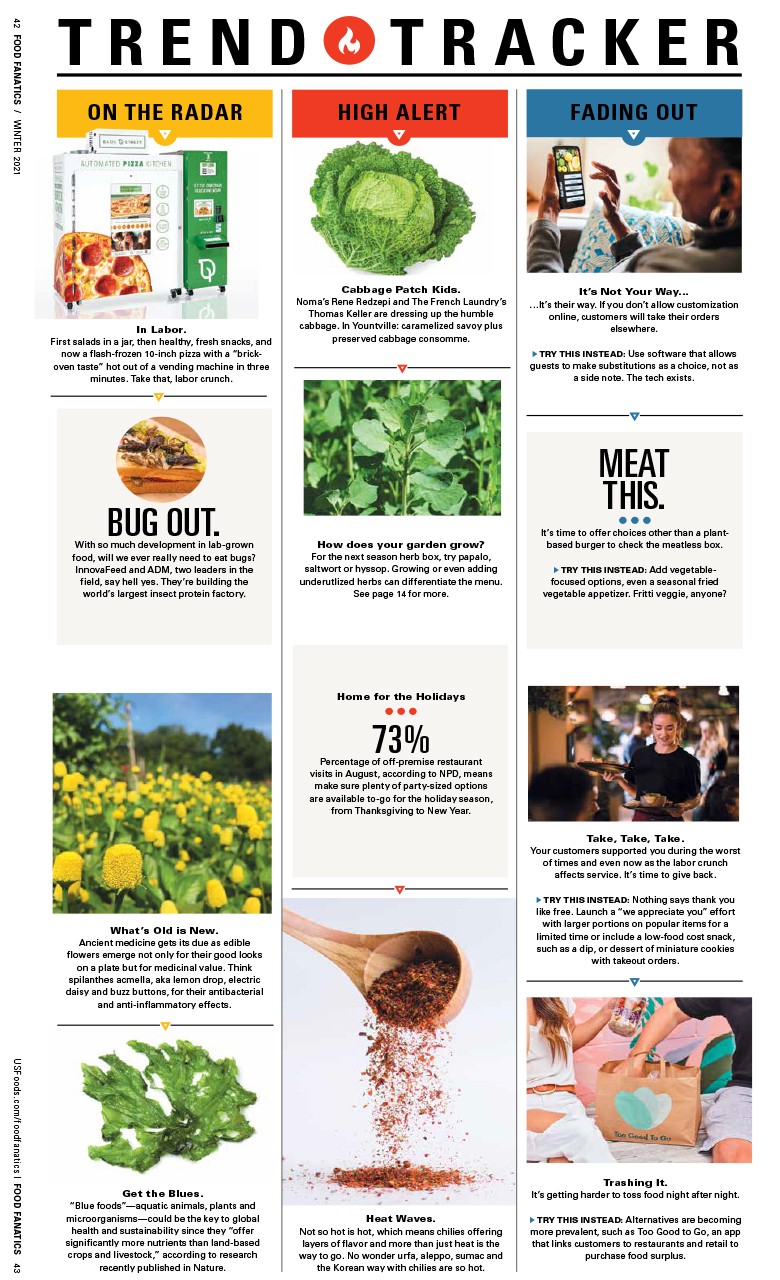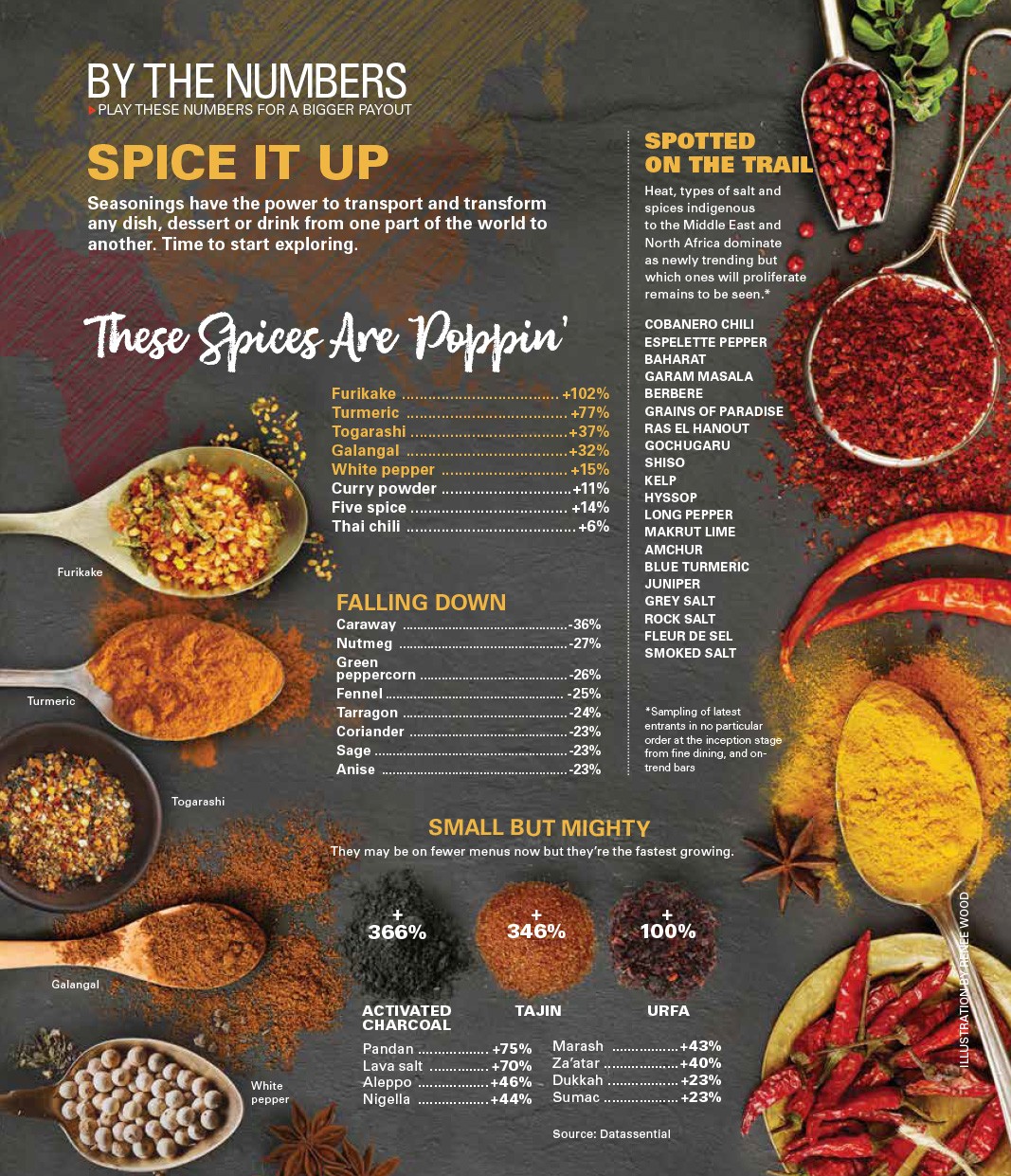SIX WAYS TO ENSURE A FOOD-SAFE SUMMER AT YOUR RESTAURANT
Store meat and produce separately. Wash your hands after using the restroom. Keep hot foods hot and cold foods cold.
Such food safety maxims are par for the course in the business. But when it comes to public health and minimizing restaurant food waste, there is always room for improvement. That goes double when temperatures start to climb during the summer.
Avoid the very real threat of lost customers, revenue and reputation by putting together a cheat sheet of tips and tricks. Make sure to highlight the ones that might not be top of mind. Here’s a place to start:
Get Picky About Produce
Where you see a ripe red tomato, food safety experts like Doug Powell, publisher of barfblog.com, see the perfect dirty bomb of bacteria.
“Fresh produce is the biggest source of foodborne illness in the U.S. and North America, and it has been for at least a decade,” Powell says. The Center for Science in the Public Interest reports that fresh produce has been responsible for 629 outbreaks over the past 10 years, making nearly 20,000 people sick.
“You have to start reducing the level of dangerous pathogens, like E. coli, on the farm,” he says.
Powell encourages restaurants to get to know their farmers and their processes in order to limit the spread of diseases. Don’t let buzzwords like “natural” or “sustainable” suffice. Dig deep for information, he says, about their irrigation water, soil amendments (as in whether they use manure) and hand-washing practices.
Study the Driving Routes
Distribution is an important consideration to ensure food safety and freshness, says Michael Navarrete, executive chef at Cafe Luxembourg in New York City. One of his first questions for any prospective vendor: Where am I on your delivery route?
While produce might not spoil on an unrefrigerated truck, those warmer temperatures can encourage germs to multiply and spread, increasing the likelihood some might get missed during washing.
“Let’s say it’s a small guy, and he doesn’t have a refrigerated truck,” he says. “If they’re going to bring something like lettuce, am I going to get it at 7 in the morning after he picked it an hour ago, or am I going to get it at 5:30 in the afternoon after he’s driven around New York?”
If it’s the latter, Navarrete will likely pass. And with the summer months often bringing more locally sourced produce – likely from smaller agricultural outfits that might have less sophisticated washing procedures – Navarrete also recommends being extra diligent about handling.
Meat the Guidelines
For many restaurants, summer and barbecue go hand in hand. But hot-holding slabs of meat can sometimes feel like walking a tightrope. An overly high temp will dry out meat; temps that are too low can cause food safety concerns that might lead you to scrap the slab altogether.
To help kitchen staff manage that tightrope act, remind them that food code requires a hot holding temperature of 130 degrees or higher for meats, and any meat in the hot-holding unit must be tested at least every four hours. Test the accuracy of the kitchen’s digital thermometers at the start of the season, and create an accessible storage area. Regularly compare holding times and temperatures with nightly tickets, and then recalibrate how much should be cooked on the pit – and how often.
Marinade can pose its own risks. Establish and train new employees on proper handling methods, including not repurposing marinades for another piece of meat or vegetable. Dispose of fresh-made marinades after a day (or prepackaged ones by the expiration date) and keep in mind that reduced oxygen packaging (ROP) comes with special guidelines.
If you have an ROP product, you’re required to have a Hazard Analysis Critical Control Point plan (HACCP), says Trevor Morones, a Las Vegas-based butcher and owner of food safety consulting group Control Point.
“What it boils down to is having those conversations with the Department of Health and saying, ‘This is what I want to do. What are you going to require for me to do this properly?’” he says.
Keep Your Cool
Temps aren’t just rising outside – they’re likely hitting near-boiling points in your kitchen, too. If Murphy’s Law is any indication, there’s no better time for your walk-in to organize a walkout than during the dreaded dog days of summer.
Navarrete recommends pre-emptively servicing the refrigeration system to ensure you’re not scrambling to have a broken walk-in fixed while everyone else might be, too. Limiting the trips in and out of the walk-in can reduce wear and tear.
“A lot of people going in and out of that walk-in door is going to warm up your walk-in quite a bit, and that can be a really dangerous thing,” says Kasey Mills, co-owner and executive chef of Mediterranean Exploration Co. in Portland, Oregon. “Your condenser is fighting harder to cool it back down, and you can end up freezing your condenser and ruining it over time.”
Heed this advice Mills received from a refrigeration expert: install hanging plastic flaps in front of the door to keep the chill in. Since many workers find them annoying to walk through, they’ll limit the number of trips they make.
Mop Up Your Cleaning Supplies
While you’re scrubbing down your workplace, check on your cleaning supplies. “How often are you cleaning or sanitizing your mop heads or handles or buckets? That stuff is important,” says Morones. “If you’re not changing out your mop head and you put clean water in there, you’re not doing any favors by mopping the floor.”
Other often-neglected areas? Door handles and walk-ins. “The walk-in is a very neutral zone, so it can get overlooked,” says Mills. “People are tracking through the kitchen every day, and they’re bringing stuff into the kitchen on their shoes, and they don’t even realize it. We clean our walk-in daily – but weekly, it gets a super solid scrub and we change everything out.”
Embrace Sick Days
Employees are your last line of defense against foodborne illness, though 51% of food workers come into work sick, a 2015 study from Alchemy found. Sick employees can spread all kinds of bugs, including norovirus – the leading cause of foodborne illness in the country, according to the Centers for Disease Control and Prevention.
The Alchemy study also reported that 45% of those who come into work sick do so because they can’t afford to lose a day’s wages. If you don’t already, consider offering some paid sick time.
“You need to create a culture where people are comfortable to say, ‘Hey, something’s wrong. I don’t feel well,’” says Morones. “Obviously, you’re going to get people that will take advantage of that, but that’s a risk you’re going to have to take.”



